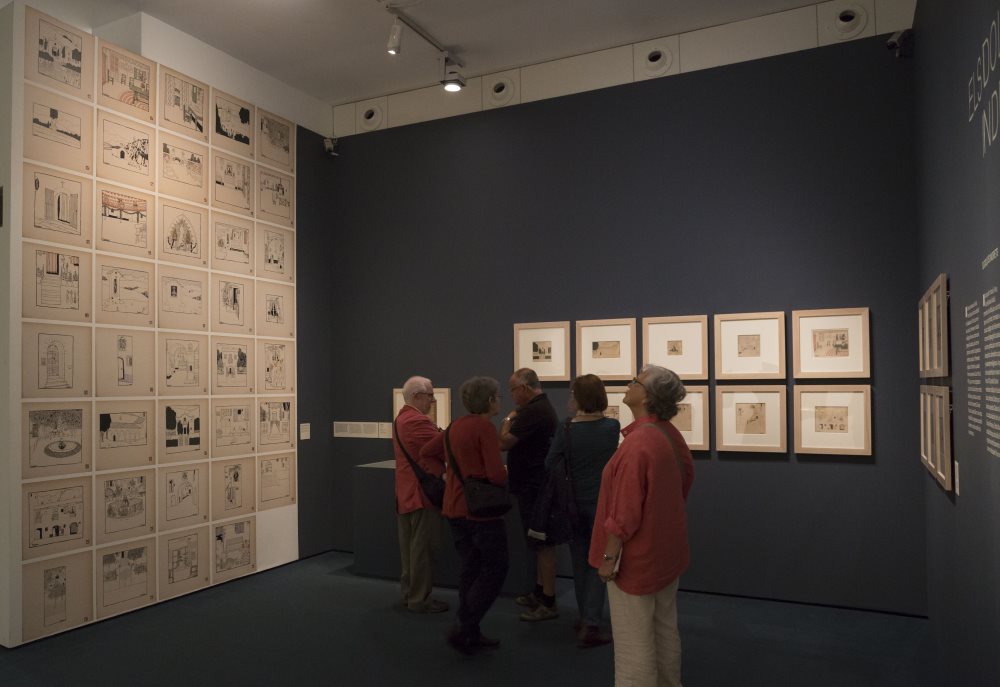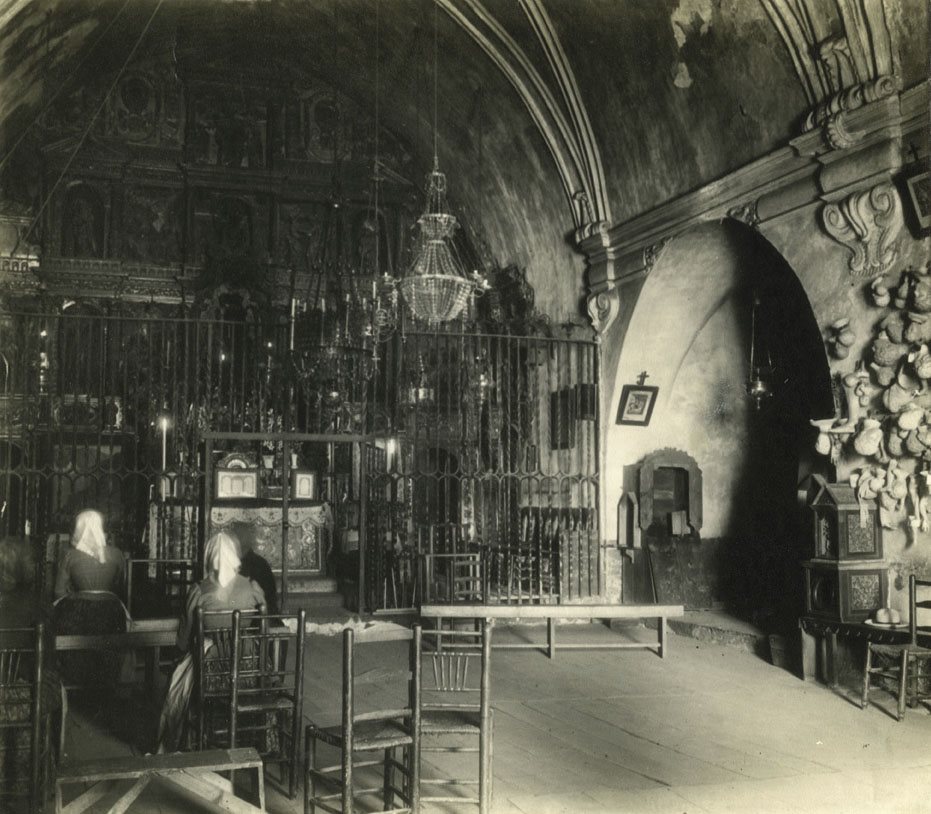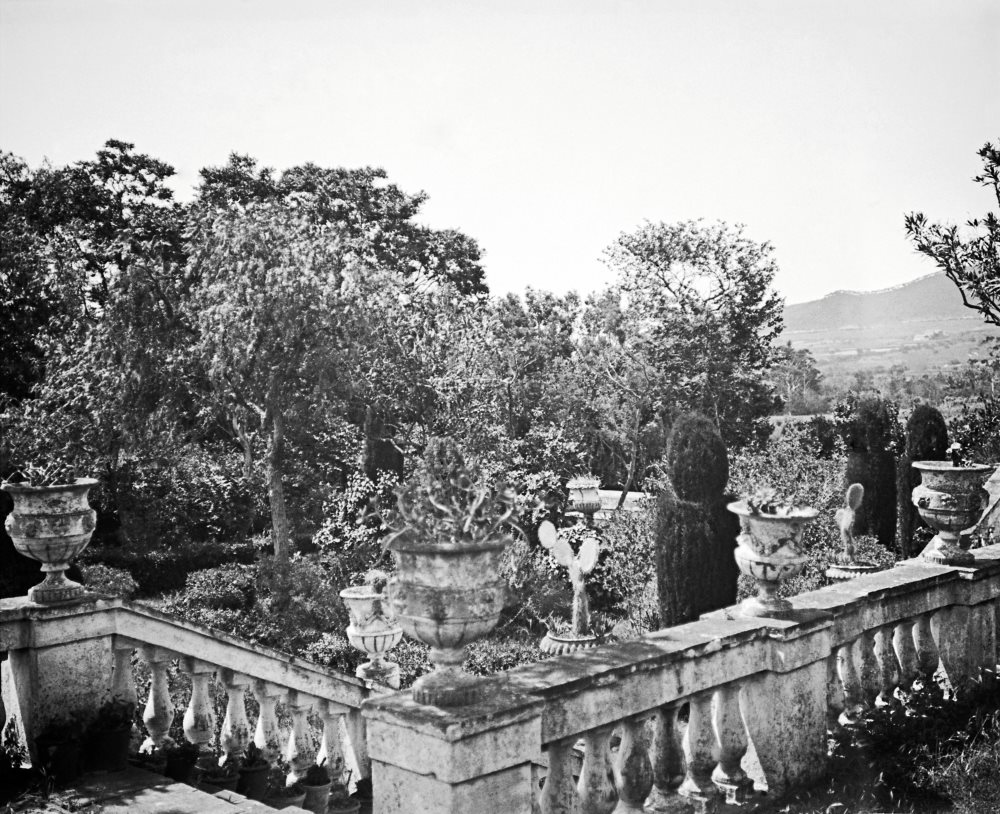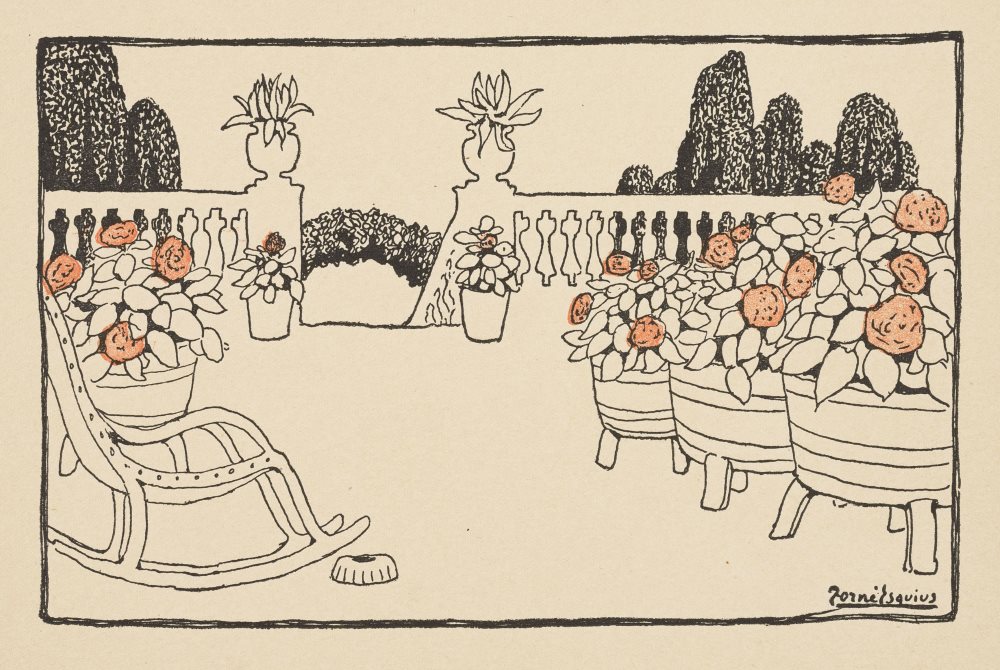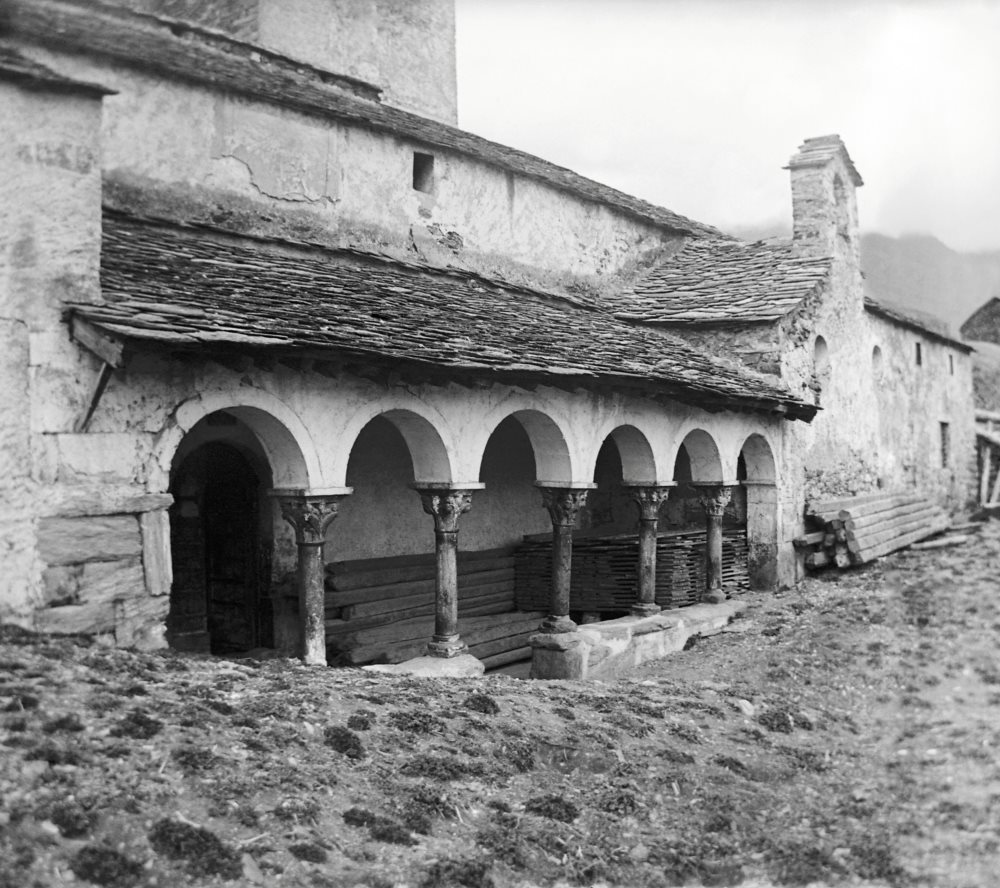Elena Llorens
Eduard Vallès
It is a fact that in Catalan art history books there are always a few lines set aside for Torné Esquius in the chapter about Noucentisme. This is so due largely to the impact —and subsequent spread— of his album Dolços indrets de Catalunya, which saw the light in Barcelona at the end of 1910 under the auspices of the Noucentista establishment. Because of the quality with which it was printed at the Oliva press in Vilanova i la Geltrú and the limited nature of the run (500 copies), this album came into being with the aim of becoming a bibliophile’s piece, a status it still enjoys today. The poet Joan Maragall writing the foreword unquestionably contributed to increasing its prestige.
What are the “dolços indrets”?
This album contains 39 plates with the ink drawings that Torné made of different places in Catalonia printed on them, a delicate series with which the artist made an “inventory” of the Catalan landscape and architectural heritages in their popular and religious aspects: from village streets, domestic interiors of cottages or exteriors of farmhouses to oratories, sanctuaries, church interiors or boundary crosses, to mention but a few examples. It is a faithful portrayal of Catholic, rural Catalonia at the beginning of the 20th century which, in the hands of the Noucentistes, eventually personified the ideal Catalonia to which they aspired.
Video with all the pages of the book’s illustrations, available at the museum’s library
Are the “dolços indrets” Noucentista?
Despite the fact that Noucentisme is neither a school nor an artistic style, this album has always been thought of as a paradigm of Noucentista aesthetics. We now know, however, that Torné Esquius made these delicate ink drawings in the first years of the century, in about 1903 (and thus seven years before they were compiled in album format), at the height of Modernisme, when the term Noucentisme had not yet been invented by Eugeni d’Ors.
El Carmel shrine (Barcelona)
Who says that the originals of the “dolços indrets” do not exist…?
The original drawings had always been given up for lost. The research done for the exhibition Torné Esquius has enabled us to find 15 of them and expose them to the public light for the first time. This is without doubt an important event and, at the same time, a unique opportunity to be able to gauge the degree of fidelity with respect to the originals printed by Oliva of Vilanova in this album.
The sanctuary of the Mare de Déu de Núria (Girona)
Are the “dolços indrets” real places?
The Can Glòria farmhouse, in the district of Horta in Barcelona
To date, no one has identified these places. What’s more, nobody has even thought about whether they were real or not. Thanks to the exhibition at the museum and the catalogue that accompanies it, we now know that these places are not the product of Torné’s imagination but that he worked on the ground, reproducing with almost photographic fidelity the scene he beheld. To be precise, and thanks to old photographs, we can say for sure that the artist’s pen immortalized the sanctuary of El Carmel in Barcelona (“attractive place” No. 1), the Can Glòria farmhouse, in the district of Horta in Barcelona (No. 8), the sanctuary of the Mare de Déu de Núria, in El Ripollès (No. 15), and the Romanesque church of Sant Jaume in Queralbs, also in El Ripollès (No. 27).
The Romanesque church of Sant Jaume in Queralbs (Girona)
As curators of the exhibition Torné Esquius: Poetics of the Everyday, just as we hope to discover some of the works whose whereabouts are still unknown, we also issue a call to identify some of these “dolços indrets” that we have been unable to recognize. Therefore, from this week onwards, via the museum’s Twitter account, we shall be encouraging you, by showing some of these drawings, to see if, by joining forces, we can name them. If you are curious, you can follow the hashtag #Dolçosindrets.
Do you feel like taking part?
Eduard Vallès and
Art modern i contemporani

